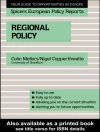Sweden is internationally renowned for its generous welfare state. However, over the past decades, changes in economic circumstances and population composition, as well as increasing population concentration in larger urban areas, have imposed new challenges to the Swedish model. What does this imply for individual and collective identity formation? Why and how have some places become more attractive than others? What individuals or groups prosper from these changes and who looses?
The authors of this anthology highlight social and political change in Sweden from different perspectives, based on various studies in urban and rural Sweden. They represent five disciplines: history, human geography, political science, social work and sociology. Contextualised by theories on place and identity, the book’s ten chapters focus on ageing, lifestyle migration, rural landscape, place branding, group identity, religion, music, the school as a meeting place, unsafety and residential projects.
The participating authors are affiliated with the Centre for Urban and Regional Studies (CURe S) at Örebro University, Sweden.
关于作者
is a human geographer and member of the Centre for Urban and Regional Studies (cures) at Örebro University, Sweden. In his Ph D thesis ‘Divided schools – Processes of segregation in the Swedish school system’ (2011) he describes the change in the Swedish compulsory school system and how it has influenced the school as a meeting place for pupils with different socioeconomic and/or ethnic backgrounds. In autumn 2014 he is working at the Centre for Urban and Regional Studies at Uppsala University (Sweden), studying whether the pupil’s choices of schools have any impact on their future life.












